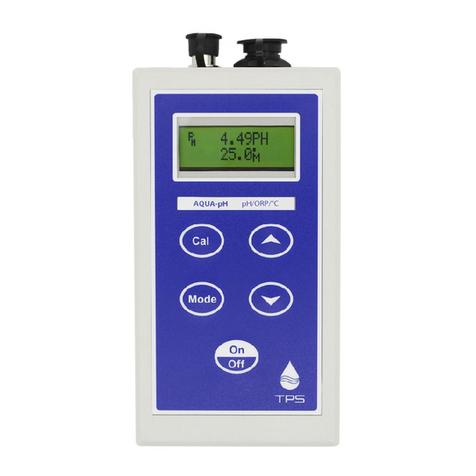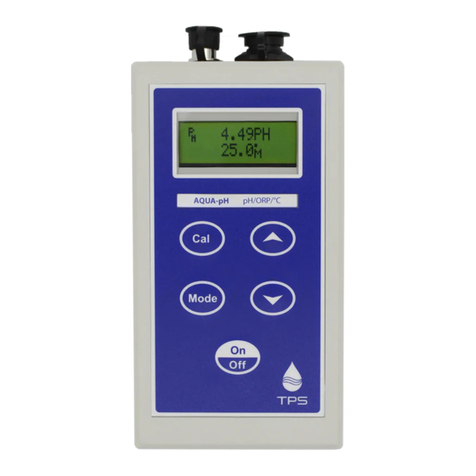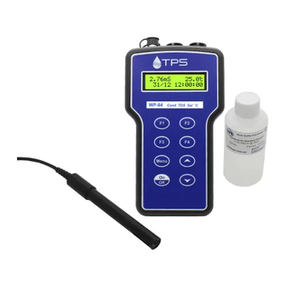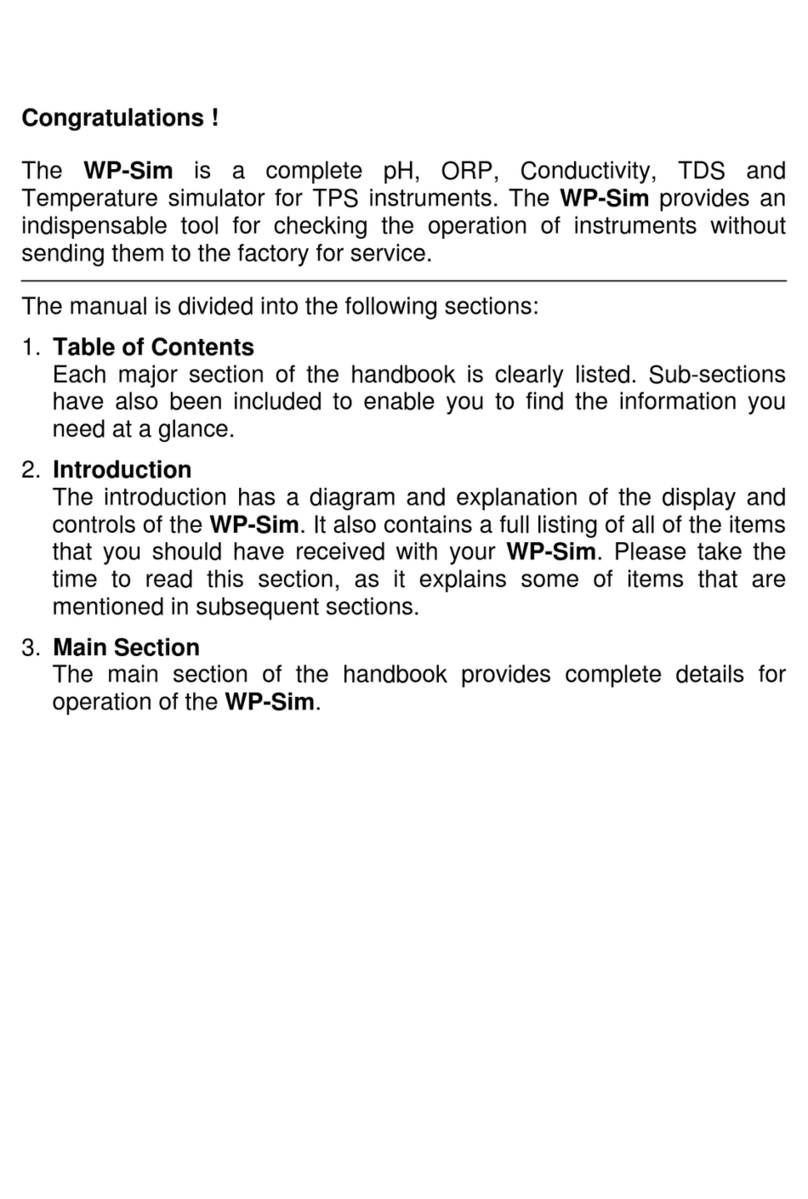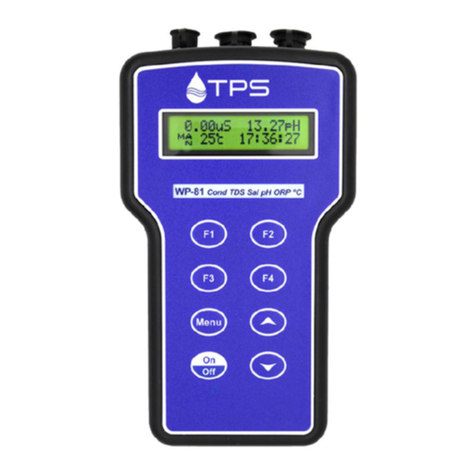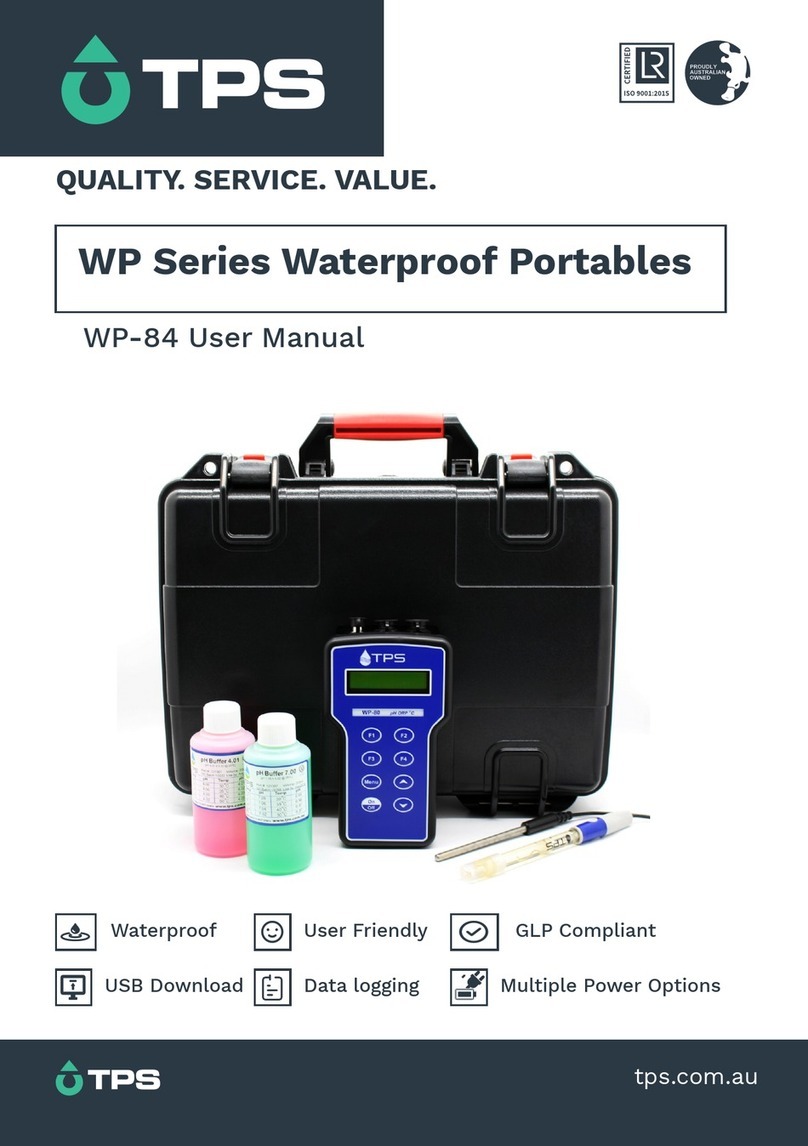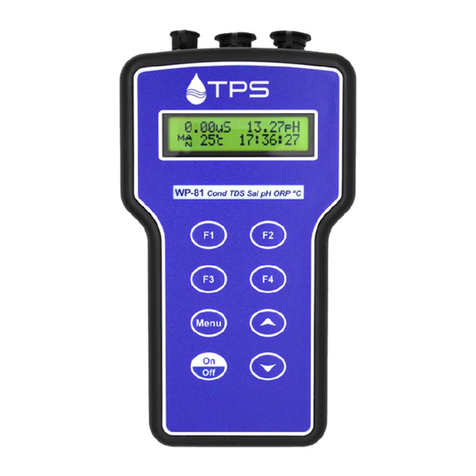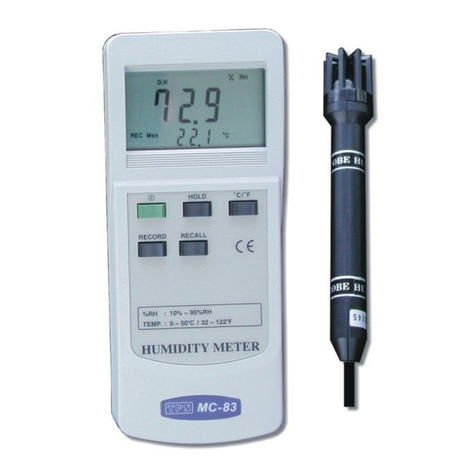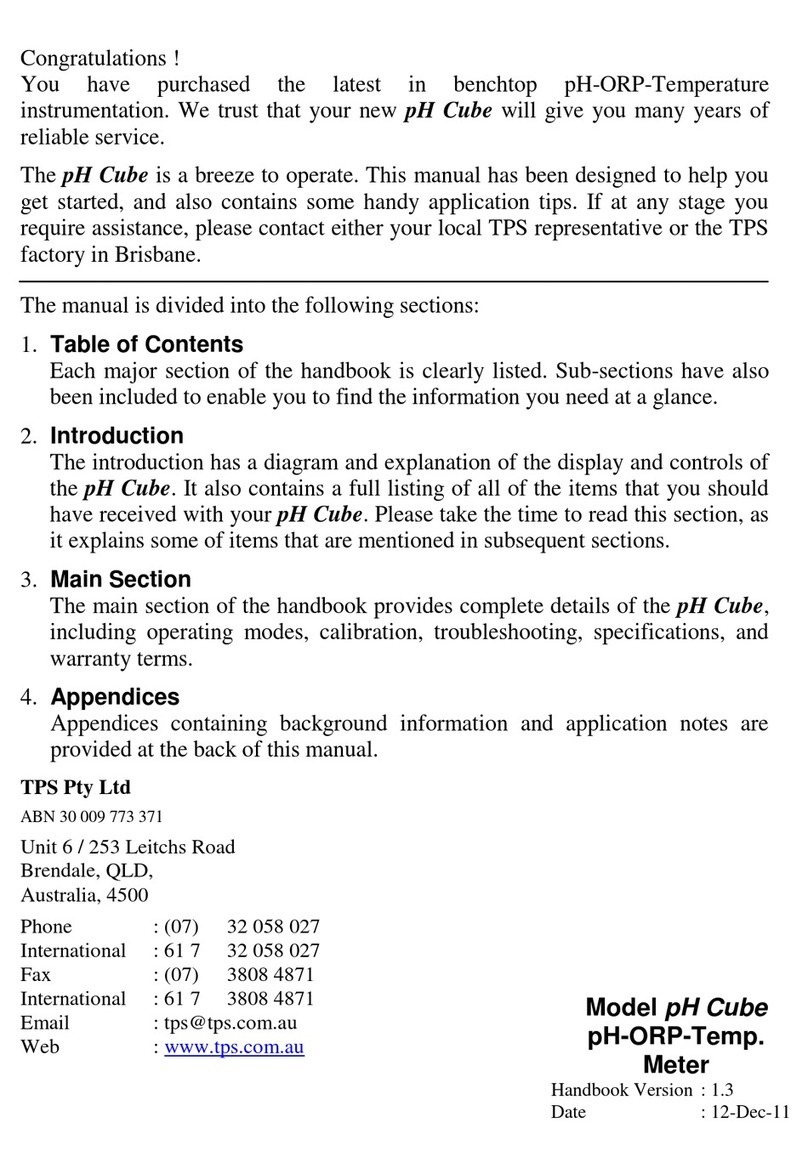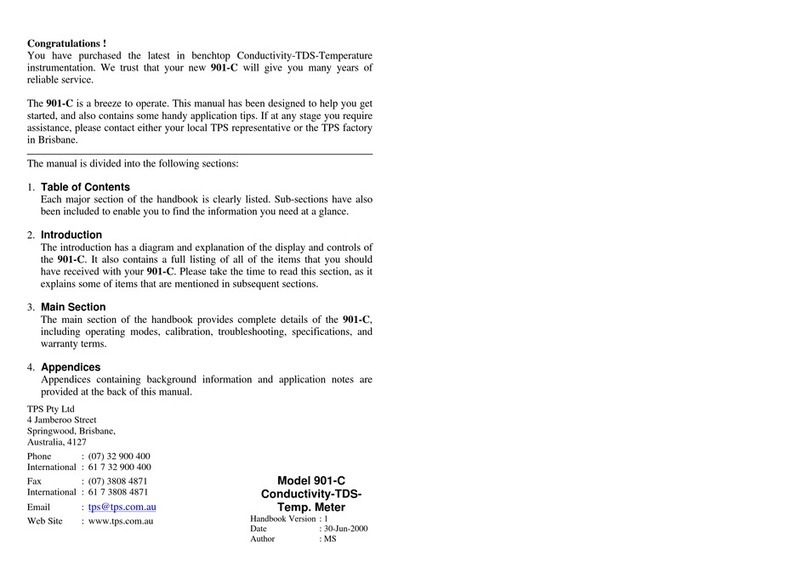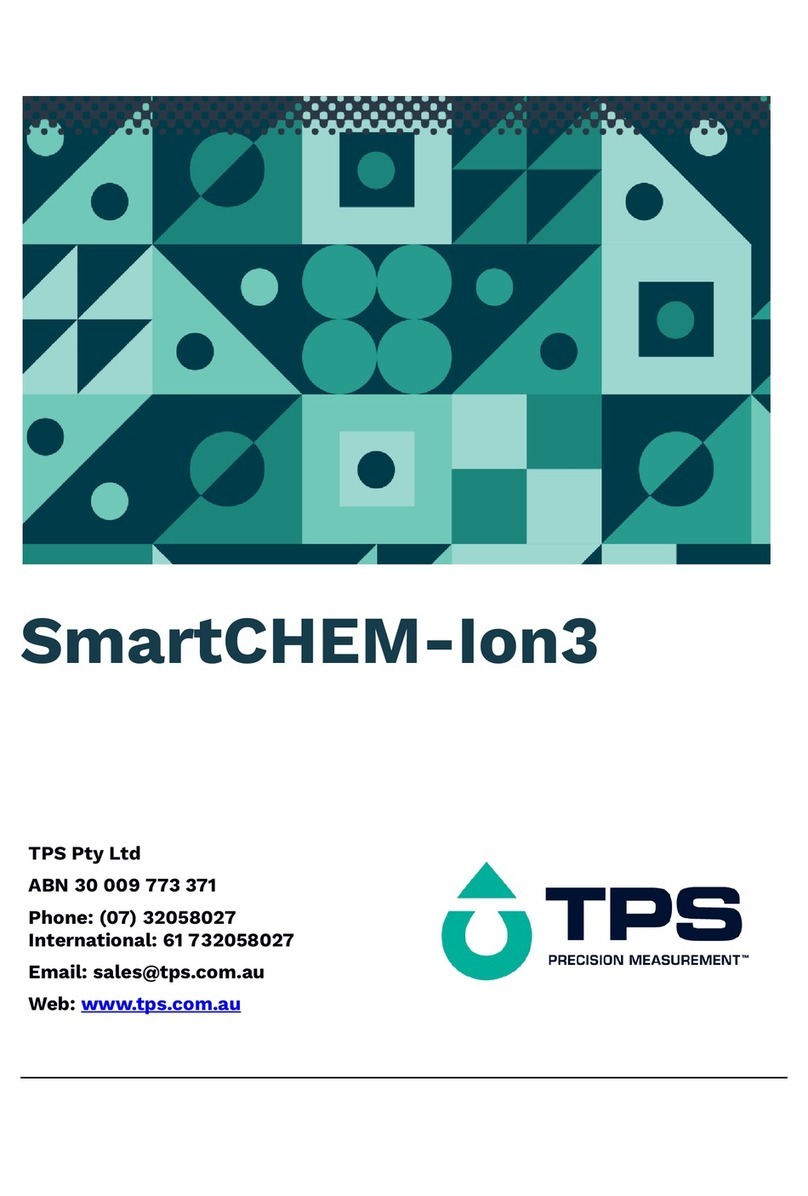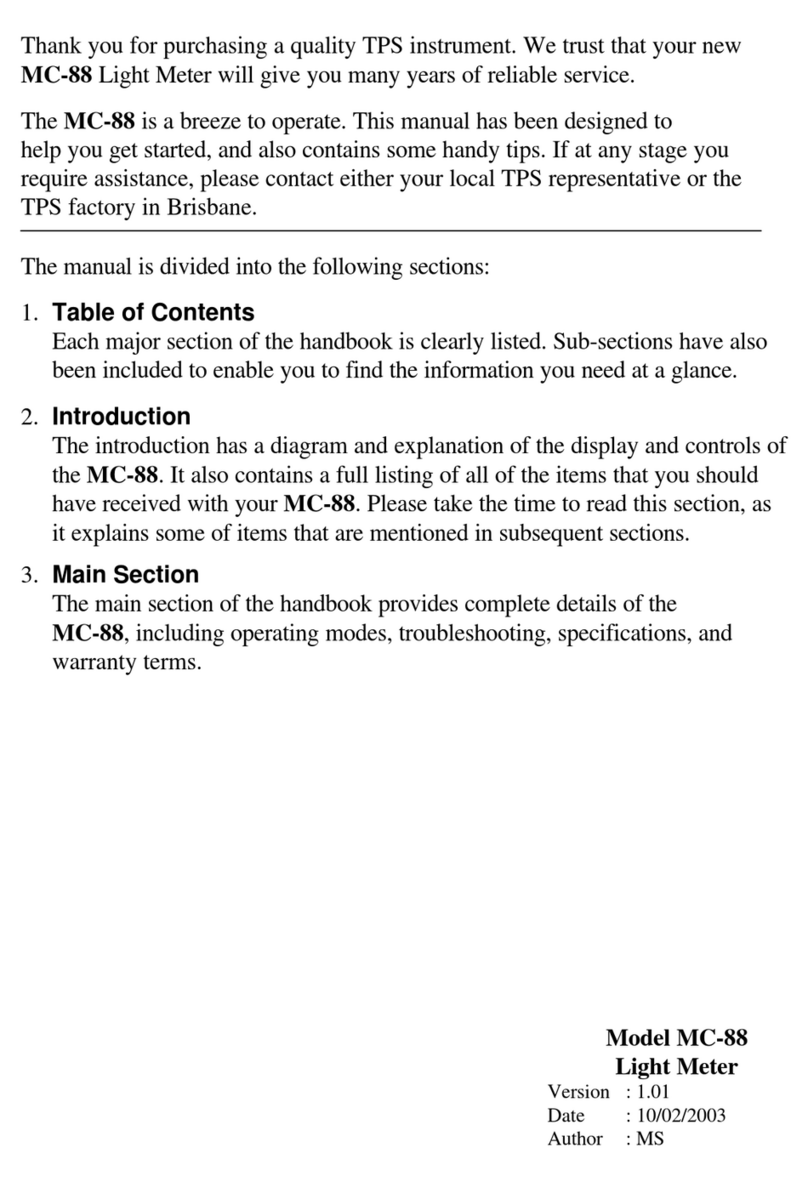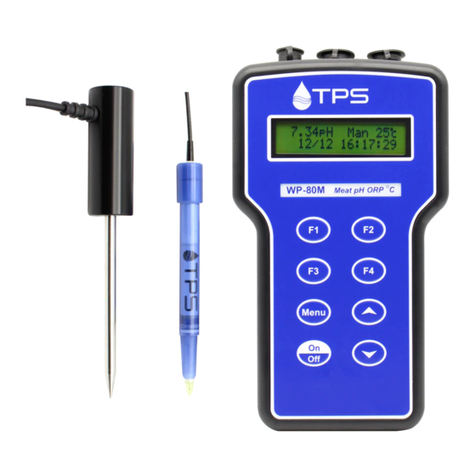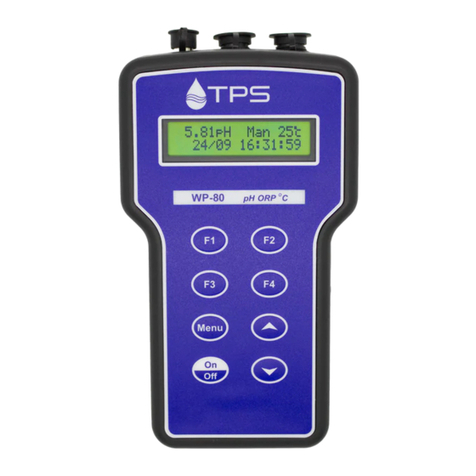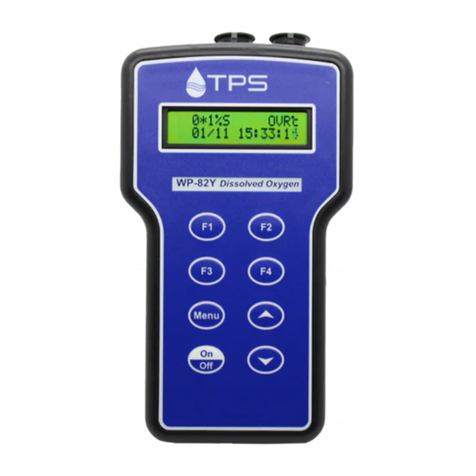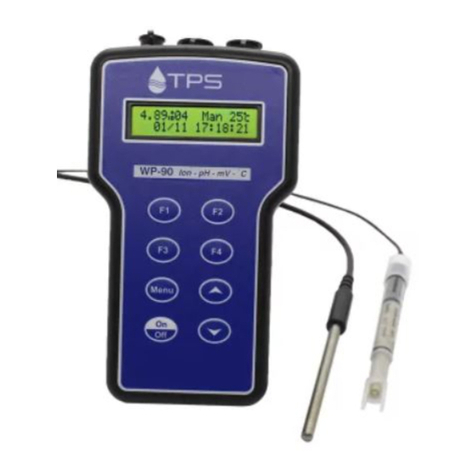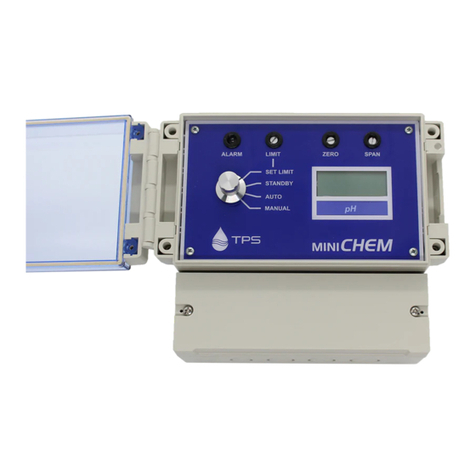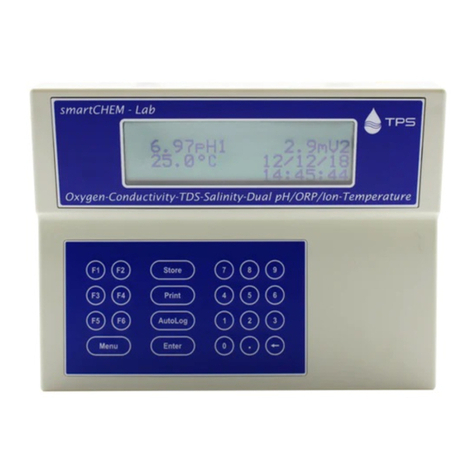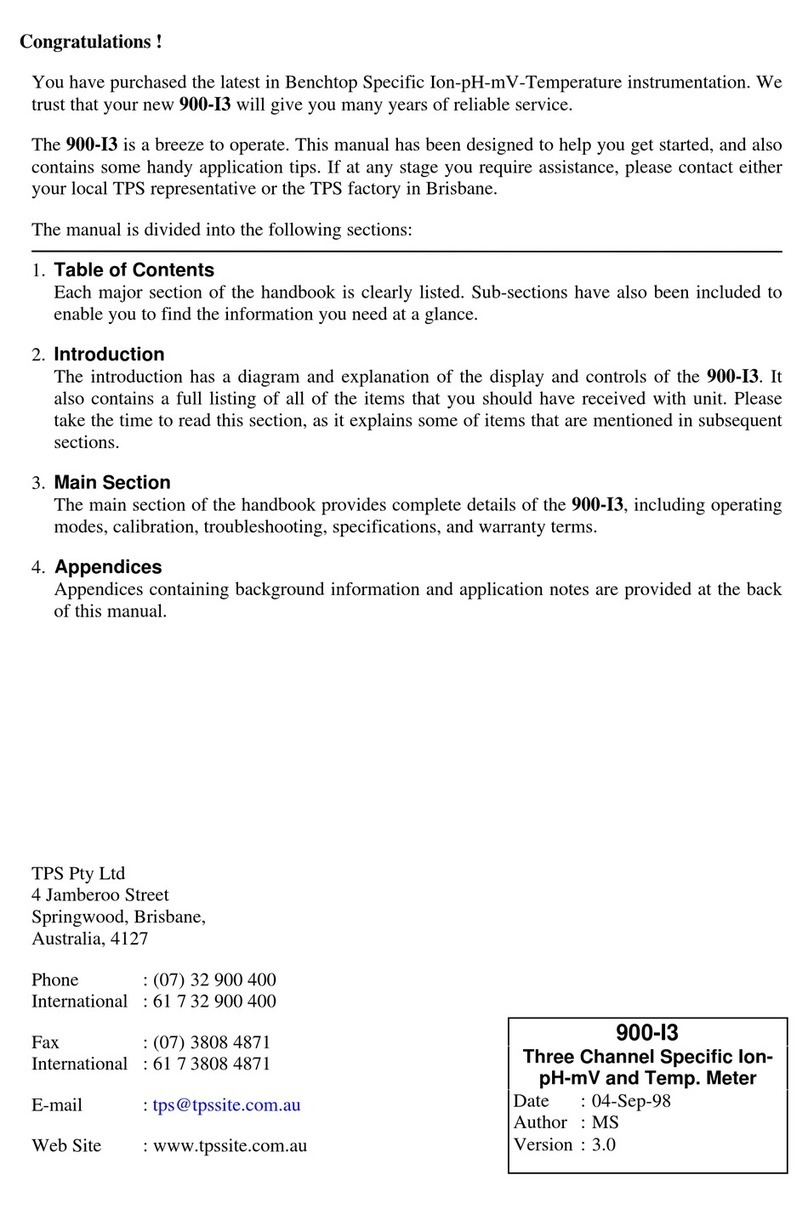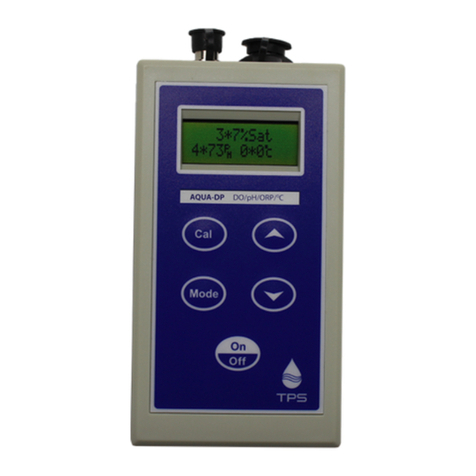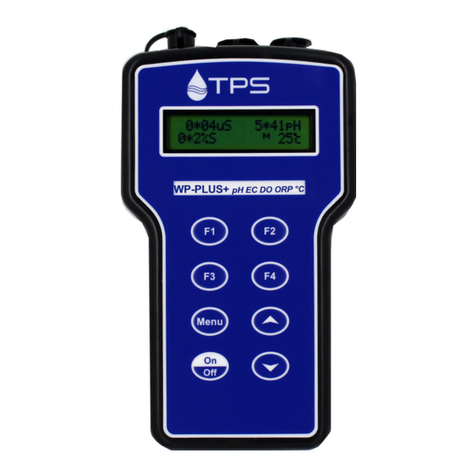
Page 2 Contents
1. Introduction.......................................................................................4
1.1 WP-82 Display and Controls..................................................................4
1.2 Unpacking Information...........................................................................6
1.3 Specifications.........................................................................................8
2. WP-82 Menu Structure....................................................................10
3. Operating Modes.............................................................................11
4. Dissolved Oxygen Calibration.......................................................12
4.1 Calibration Procedure..........................................................................12
4.2 Calibration & Measurement Notes.......................................................13
4.3 Calibration Messages ..........................................................................14
5. Temperature Calibration ................................................................15
5.1 Calibration Procedure..........................................................................15
5.2 Calibration Notes .................................................................................16
5.3 Calibration Messages ..........................................................................16
6. Salinity Correction..........................................................................17
7. Altitude or Atmospheric Pressure Correction .............................18
7.1 Selecting Altitude or Pressure Correction............................................18
7.2 Changing the Altitude or Pressure Correction value ...........................19
7.3 Notes....................................................................................................19
8. Good Laboratory Practices (GLP).................................................20
8.1 To recall GLP information on the display.............................................20
8.2 Failed Calibration.................................................................................22
8.3 Printing GLP Information to the RS232 Port........................................22
8.4 Instrument Serial Number....................................................................23
8.5 Additional GLP Features......................................................................23
9. Notepad Function ...........................................................................24
9.1 Recording Readings into the Notepad.................................................24
9.2 Recalling Records from the Notepad...................................................24
9.3 Erasing Records from the Notepad .....................................................25
9.4 Printing Records from the Notepad to the RS232 Port........................25
10. Automatic Datalogging...............................................................26
11. RS232 Port...................................................................................28
11.1 Setting the Baud Rate......................................................................28
11.2 Sending Readings to the RS232 Port..............................................28
11.3 RS232 Configuration........................................................................28
11.4 Communication and Statistical Software.........................................28












